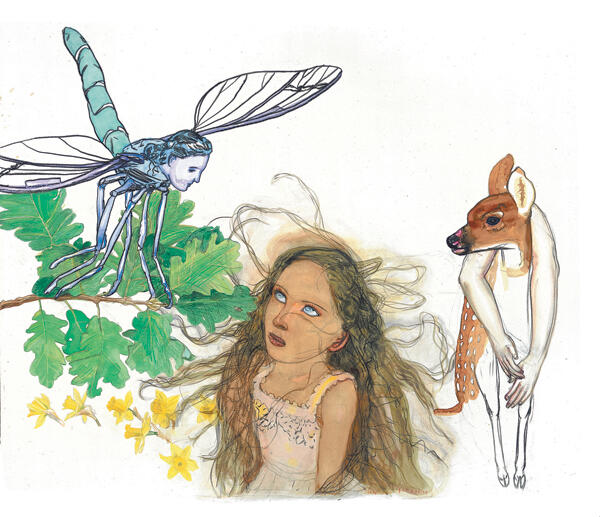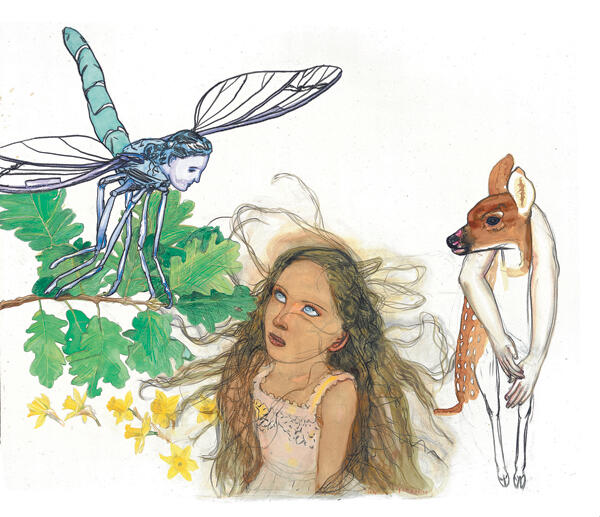Pat Andrea
Museo Emilio Caraffa, Córdoba
“How do you know I’m mad? said Alice. `You must be,' said the Cat, `or you wouldn't have come here.'

The quotation from Alice in Wonderland (Lewis Carroll, 1865) is almost a password to enter Room 2 of the Caraffa Museum, perhaps the most important in the building.
There, we immerse ourselves in the magical world of a new illustrated version of the classic of oneiric literature. In this case, we enter the exhibition premises guided by artist Pat Andrea (The Netherlands, 1942), who was commissioned by editor Diane de Selliers to illustrate the 19th century bible.
It is a dream which demanded of the artist five sleepless years.
Unlike other versions like that by Tim Burton (2010), the characters of this artist who lives –depending on the sun– between Paris and Buenos Aires, are somewhat reminiscent of classics like Bacon and Dalí, and at the same time are related to Argentinean authors such as Carlos Alonso and his tormented characters, or Antonio Seguí and his urban men walking all over the canvas.
The drawing, the stroke, the anthropomorphous proportions whose scale has been changed and the ridiculous infatuation that inebriates us, are the protagonists of this story of great dimensions and larger bridges laid out to our unconscious, which shakes our psyche with no elegance but viscerally.
The works exhibited, including an intervention in a wall performed live, which was donated to the emerging project of Museo MACU (soon to be opened in the mountainous region of Córdoba), have a subjective subtlety and an objective eroticism that captivates visitors’ hearts, or their testicles, depending on their age. Alice is a beautiful deformed woman whose sexuality promises to awaken the most bizarre desire in each viewer, under the attentive gazes of a rabbit, an elegant cat, Carroll himself, room security staff and some uncomprehending museum assistant.
We climb the stairs of the mysterious deck of cards dealt by the artist toward a reduction of ourselves that inhabits a huge head with blond hair, and among drawings half comic, half pictorial, we are drunk on color and apparently unfinished works.
The thing is that Andrea is the son of a painter and an illustrator.
The thing is that Andrea (who was an illustrator of Playboy in the 80s), and with him everyone else, has Stockholm syndrome and pushes us to become hostages in this narration, our own journey to Alice’s depravity and naivety. Along with Dylan and Joyce, each visitor is condemned to the materialization of dreams and nightmares that will persist as he/she moves to the following room, the next day, because they have become incorporated in our world of wonders, that world whose existence is our only certainty.
-
 from the series Alice/ Sin título, de la serie Alicia. 2003 - 2006
from the series Alice/ Sin título, de la serie Alicia. 2003 - 2006
Drawing/painting on stretched paper on wood panel, 59 x 70’8 in./Dibujo/pintura sobre papel tensado en panel de madera, 150 x 180 cm. Courtesy/Cortesía Museo Emilio Caraffa, Córdoba




